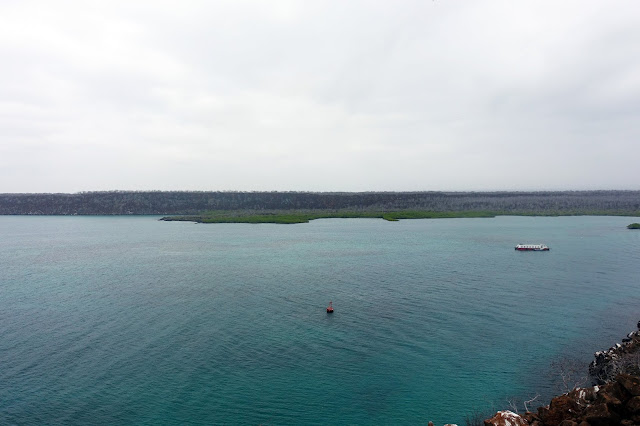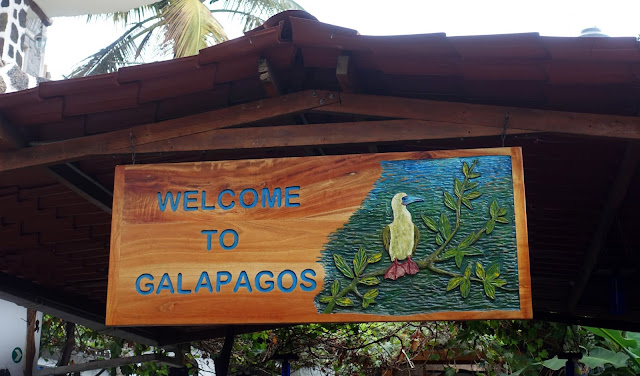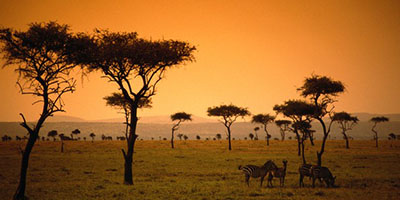Day 3: Quito, Ecuador to Galapagos Islands
Greetings from the Galápagos Islands! Today we flew from Quito to Baltra Island and then took a ferry across the canal to Santa Cruz. We landed on the northern side of the island and had to take a bus to get to Porta Ayora which is on the southern side.
 |
| Right before leaving our hotel in Quito. Ecuador is the optimal place for growing roses. |
 |
| The runway on Baltra Island. |
 |
| The canal we had to cross to get from Baltra to Santa Cruz. |
 |
| A pelican just stopping by to check everyone out. |
 |
| The most impressive thing I've ever seen. |
Twin Craters
Our first stop of the day was on our way to Porta Ayora, Twin Craters. They are massive volcanic rock sinkholes (basically) instead of actual craters. The rock itself is spectacular and the vegetation is lush and green. The northern part of Santa Cruz was very dry with mostly cacti and barren trees adapted to the rocky climate. Where the Twin Craters are located near the middle of the island, it is gorgeously green! That is one of the neat features that I love about Galápagos is that the landscape changes so dramatically in a short distance. |
| One of the Twin Craters. |
 |
| A small but deep opening near the second crater. |
 |
| Scarlett overlooking the first crater. |
 |
| A Scalesia tree covered in moss. |
This was also where I had my very first sighting of finches! After all the papers I have written on Darwin and his finches for school, I was thrilled to death to finally see one in person. They were everywhere and there were all different kinds! Unfortunately, they were moving too quick for me to be able to grab a photo.
 |
| Scalesia trees lining the road only road to Port Ayora. |
Rancho Primicias
 |
| Welcome to Rancho Primicias. |
 |
| Scarlett was in love with all the tortoises! |
On the ranch you have free reign to wander the grounds and admire the tortoises, but there are strict rules in the Galápagos that you must keep a distance of no less than 6 ft from any wildlife (if able). They also were in the process of planting new trees, so we were also asked not to disturb any of the large rocks set up to protect the saplings. The rocks are mostly there to protect them from the tortoises though.
 |
| A giant tortoise munch on a snack. |
 |
| Pool party! This delightfully green, algae-filled pool is a great spot to cool down. |
 |
| The grass matches the algae. Can you spot the duck? |
Not only did we get to see them in their natural habitat, but we got to try on our own shells too! Not very accommodating I must say and not the most graceful to get in and out of...
 |
| This were so heavy, no wonder they move so slow. |
● ● ● ● ● ● ● ● ● ●
Fun Fact: Much like the rings on a tree, you can tell a tortoise's age by the rings on its shell - well, sort of. The more visible the rings are, the younger the tortoise is. The definition between the rings smooths out the older they get.
● ● ● ● ● ● ● ● ● ●
 |
| Hotel Coloma Galapagos |
I can't wait for tomorrow!
 |
| Scarlett riding a giant tortoise. |




Comments
Post a Comment